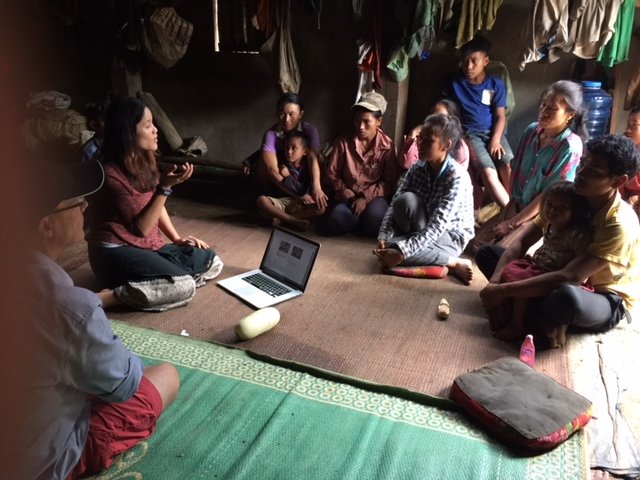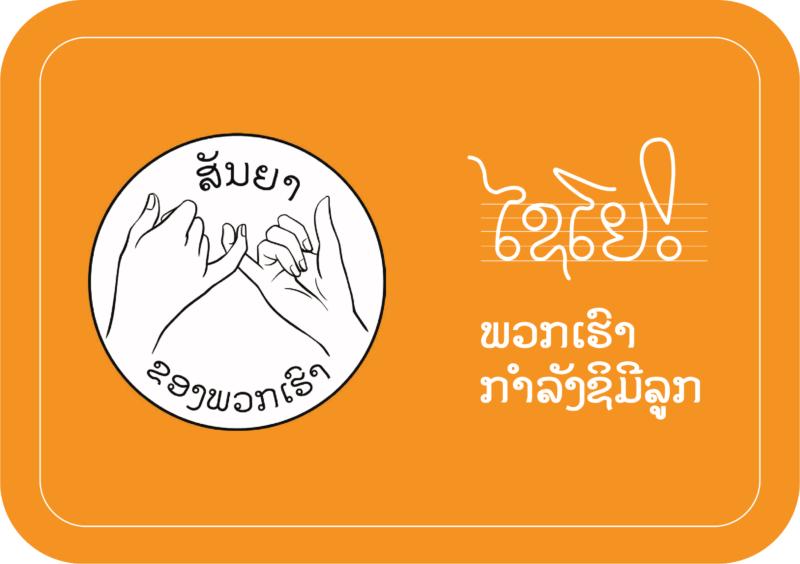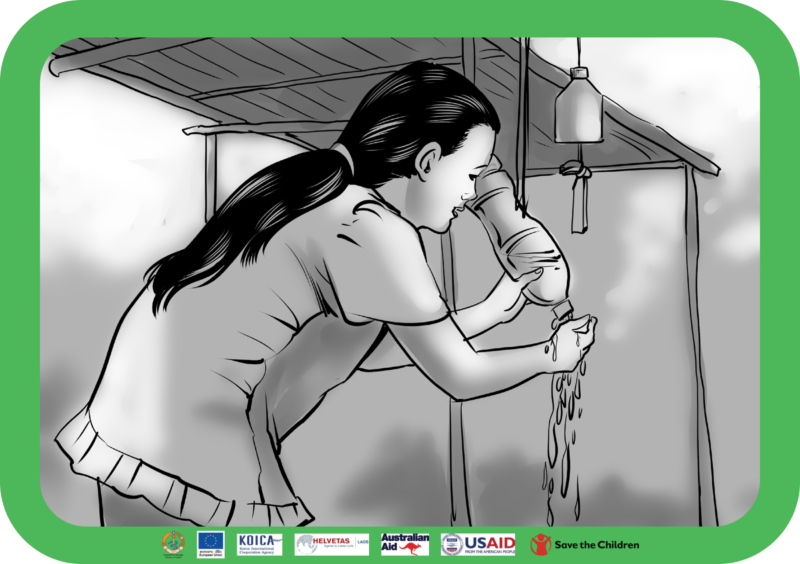A Social Behaviour Change Communication (SBCC) campaign for Save the Children in the Lao PDR
The First 1000 Days
supported by:

Short review by Adri Berger for Running Reel
Mal-Nutrition and Stunting in Lao PDR
Malnutrition remains one of the most serious threats to children’s health in Lao PDR. Nearly half the country’s children suffer some form of nutrition-related illness. In some areas of the country more than half of the children under 5 years of age are stunted, a condition that is marked by slow growth as a result of poor and malnutrition.

The brief was to create a Social Behaviour Change Communication campaign with the village community central to the ideas. Behaviour matters and this is the core message in particular to nutrition and hygiene within the ideas for the campaign. One of the keys to success was to create a campaign that was told through the stories of people from the target groups and from within the communities, aimed at 1000 day households.
MEET THE TEAM
Adri Berger: Filmmaker/Director team leader
Dorn Bouttasing: On project based work, help with production, communication, script development and assistant director. She speaks English, Lao and Khmu.
Dara Pathammavong: Editing, graphic designer, translations, camera assistant. He speaks Lao, English and French.
Lah Soukaseum: Assistant production. She speaks English Lao and Khmu.

Production process
After developing several ideas we settled on an approach with a young family at the heart of the campaign and tell their story and experience of going through pregnancy up to their child becoming two years of age covering the first 1000 days of the child. With the couple to narrate their story and visuals to underpin these messages containing small doable actions.
The scripts were developed and written by Mary Dunbar and we worked closely with her making sure to attain a high level of accuracy not only in the real experience of the couple but especially to introduce the small doable actions in the developed materials. Key issues about believability, desirability, learnability and do-ability were at the heart of developing a sensitive strategy. Each component is in itself divided in a way that helps and aims to appeal to people on an emotional level.
The campaign name was firmly established early on and became;
Our Promise
Based on the universal appeal of the ‘Pinkie Promise’ it became the logo for the campaign. After the first round of testing the concepts it was shown to have a wide appeal, understood and liked. People very quickly would join their pinkies and shared the idea of the Our Promise symbol. Early findings of this testing showed an overall positive response especially as it involved a simple physical action, encouraging people to connect and this in turn became a simple way to create a ‘call for action’. The first round of testing gave us the information we needed to continue this approach and make sure the campaign was fun and had interactive elements to get people moving.


The second step was to create a theme song for the campaign, a memorable tune with lyrics about the first 1000 days, importance of nutrition and good health; The song was developed by Max Somboun who wrote the lyrics and created the tune based on Good Health and Good nutrition. Max runs a small music centre named ‘Music for Everyone’ in Luang Prabang. The song is catchy and first renditions were liked and well received. We developed the song further and made several recordings with local singers in our own recording studio. We settled on a version with singer Ms Bounthavy Sayarath known as Far. The musical score was further developed by Michael Bishop in the UK and then assembled in the studio in Luang Prabang.

The four films each tells the story during the 4 phases of the first 1000 days of a child. The first film shows the couple during pregnancy. The second film, from birth to 6 months. The third film, the baby growing up from 6 to 12 months. And the final episode, from 12 to 24 months. Each film shows good practice and small doable steps for healthy development avoiding stunting and positive brain development through good nutrition and hygiene.
Early in August we went to scout for the locations and to find the family to act in the films within the Khmu community in Noi district, Northern part of Luang Prabang province. We spend about three days visiting villages and we talked to many people and young couples. It was in Ban Huay Ngon that we found a suitable location. The house in the central part of the village was made of bricks and cement, and also had a latrine in the back of the house as well a water supply directly next to the house. We returned the following day and met with the family, and as luck would have it the parents of a young couple lived in this house, the couple have a young daughter just over 2 years of age. A perfect match for our story and the whole family was excited to be involved after we explained the project we were planning. The couple, Sith and Bong, were very keen to work with us and they understood the broad lines of the concept.
We talked to several families before we found the couple Sith and Bong.
Sith and Bong with family and Dorn explaining the concept of Our Promise
OUR PROMISE
THE PRODUCTION
The production process took place the second and third week in August. It was not the best time of the year and we had to deal with lots of rain, a muddy environment but we had a deadline for the campaign to meet and so we started the process in the hope we’d have enough time without rain to get us the material we needed. The first few days we had to make a few changes to the overall way of making the films work. We decided that the narration was to be done at a later time in the studio and use the time we had as much as possible with the couple and their extended family.
The muddy roads and paths during some downpours in the first week.
This approach proved to be a good decision and after the second day we started to make good progress with the first storyline. The first story reporting on the experience of being pregnant was the easier one to accomplish.
Later on we had to find babies and toddlers to act as the couple’s baby and child while growing up slowly over the 2 year period after birth but filmed over a two week period. We also had to film a birth in a health centre and then edit this as if Bong was the one giving birth to her daughter. We had a few challenges on our hands…

Family meal scene. 
Dorn coaching the actors in the Sanam.

Measuring the height of Sith and Bong’s daughter, Pong. 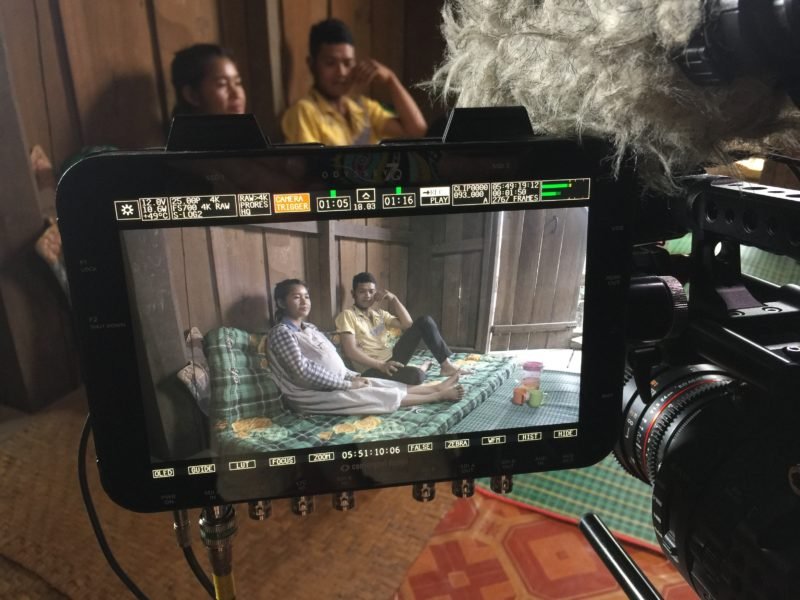
Shooting the opening scene of Film 1. 
Showing some of the footage to the curious neighbors.
Working in the village was uplifting despite the difficult working conditions, we made sure to be as light as possible with our equipment when not inside the house where we’d be set up with lights and filming with monitors and recorders.
Overall the production process went well and the families were amazing to work with. The village would come out on occasions when we’d be working outside and observe the process to sometimes great hilarity.
POST PRODUCTION
The post-production phase of any film often takes more time than the actual shooting of the film and can take several months to complete. It includes the complete editing, color correction, and adding music and sound. During this time we also learn more from the material we have and how to add a stronger sense of the intention of the movie. Through the use of colour grading and adding music and other ambient sound, the feeling of the movie can be influenced.
In the case of Our Promise we had a multitude of material we had to process and additionally we needed to record the narrative tracks in Khmu language, adding translations in Lao and English. We also had the tasks of working on the design for the books, extra drawings for this, the wall chart and 4 radio plays among other materials.
By end of September the first film cuts were in place and books and posters were in full swing of being designed. The process from here becomes all about details and takes time to get right. Mostly the process was done relatively quickly considering the amount of work that needed to be done. On occasion the approach was adjusted allowing us to be more precise in the messaging making sure the material would be clearly understood and fun to work with.
For the books we added drawings that were inspired by the film footage used for the final edits making some changes to adapt to the messages for each part.
Above the 4 books, separated by colour identity.
The posters as well as the covers for the books all used the same image for each segment of the one thousand days.
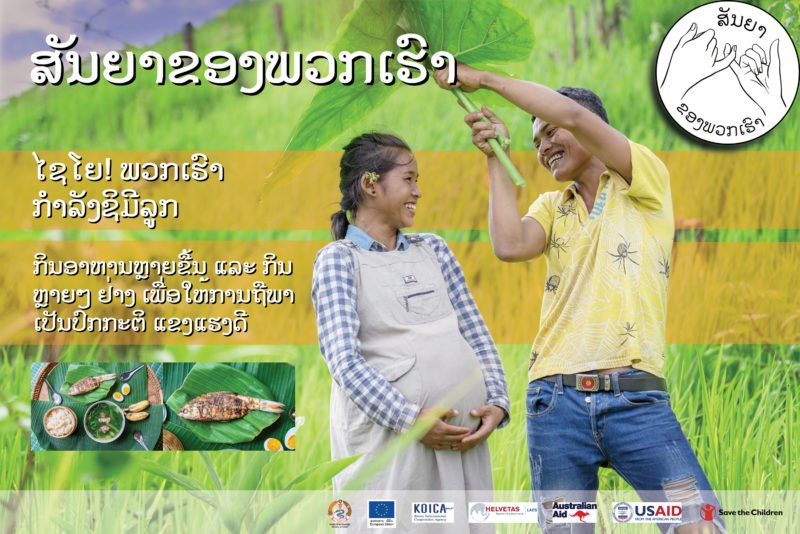


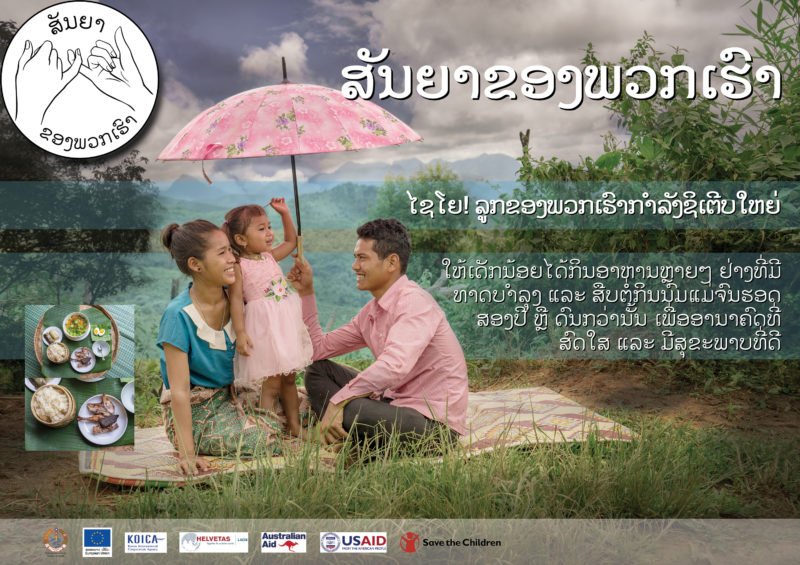
We also designed a set of flash cards, below an example showing cards from the four stories with drawings inspired by the videos:
Overall we met with many challenges often relating to time constraints. Once the work was finished and ready for printing we helped this process by visiting the printers in Vientiane and liaising with the responsible department in the Save the Children office in Vientiane.
On behalf of Running Reel:
Adri Berger founder
67 Ban Vat Nong
Luang Prabang
www.thaicam.net
adri@thaicam.net






